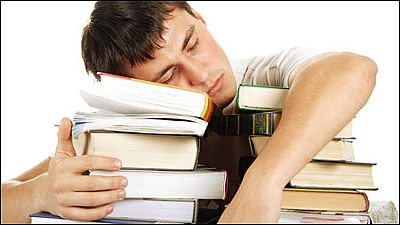Experiments show the effectiveness of the 'creativity-boosting sleep technique' used by Edison and Dali

Creativity is considered important to accomplish great work, and many creators are
Sleep onset is a creative sweet spot
https://doi.org/10.1126/sciadv.abj5866
Sleep technique used by Salvador Dalí really works | Live Science
https://www.livescience.com/little-known-sleep-stage-may-be-creative-sweet-spot
Edison and Dali are focusing on 'dreams' as a way to stimulate creativity, and are practicing sleep techniques such as 'taking a nap with a spoon between your fingers' and 'sleeping with a ball in your hand'. rice field. Using this method, when you fall asleep and lose your strength, a spoon or ball will fall and make a sound, allowing you to enter the dream world for only a short time and then wake up. It seems that this state where the boundary between dreams and reality becomes ambiguous is the key to stimulating creativity.
Human sleep is broadly divided into REM sleep and non-REM sleep, of which non-REM sleep is classified into stage 1 (N1) to stage 4 (N4) according to the depth of sleep. Edison and Dali's sleep techniques are useful for people who have fallen asleep to wake up at the stage of N1 without rushing into N2.
Delphine Oudiette of the Paris Brain Institute points out that while humans spend 5% of their total sleep on N1, little research has been done on what is actually happening during N1. Oudiette told the science media Live Science that at the N1 stage, you can think of shapes, colors, and dream fragments with your eyes closed, as well as hear the noise of the room.

Inspired by Edison et al.'S sleep technique, Oudiette et al.'S research team conducted an experiment to see if this technique actually helped stimulate people's creativity. The research team recruited 103 subjects who had the ability to fall asleep immediately, and said, 'From an 8-digit sequence of 3 types of numbers, another sequence was created according to a set rule, and the last number of the generated sequence was used. I asked them to do the task of 'answering.'
The tasks actually assigned to the subjects are as follows. If the two numbers are the same, the same number (' 9' if the two numbers are lined up) '' If the two numbers are different, the remaining one number (' If it is lined up with '91', it will be operated according to the rule '4') 'to generate a new sequence of numbers. For example, the sequence derived from the sequence '99114141' is '9491194' and the last number is '4'.

However, there was a hidden rule in this task: 'The last number is always the second digit of the generated sequence.' If the subject becomes aware of this rule, the time to resolve the task can be significantly reduced. The research team analyzed the relationship between N1 and creativity by investigating whether subjects using sleep techniques could find this hidden rule. 'Contrary to the general view, creativity is not limited to areas such as art,' Oudiette said.
Subjects first solved a total of 70 questions as the first step in the experiment, excluding 16 who were aware of the hidden rules at this point. The subject was then instructed to take a 20-minute break in a dark room with no sensory stimuli and lay in a semi-reclining chair with a cup in his right hand. At this time, the right hand was instructed to put it out of the reclining, and if the subject fell asleep and his arm was weakened, the cup would fall and make a sound, and he would wake up.
The research team measured the subject's brain waves to monitor whether they fell asleep, entered the N1 stage, or crossed N1 to N2. As a result, of the 87 people who were not excluded in the first stage, 49 did not sleep, 24 who slept but awakened when they entered N1, and 14 who passed N1 and rushed into N2. It was a person. After that, the subjects answered the dreams they had during the break and then worked on a total of 270 tasks again.
Analysis of the experimental results showed that 30% of subjects who did not sleep during the break noticed the hidden rules later in the experiment, while 83% of the subjects spent at least 15 seconds in N1. It turns out that I noticed a hidden rule. In addition, the research team reports that for subjects who passed N1 and entered N2, the effect of increasing creativity by experiencing N1 disappeared. From this result, the research team concludes that there is a 'sweet spot of creativity' between light and deep sleep.

Robert Stickgold, a professor of psychiatry at Harvard Medical School who was not involved in the study, argued that the results of this study add important evidence about 'the importance of semi-awakening (N1), which was largely ignored.' bottom. Oudiette explains why N1's sleep stages increase creativity, with some cognitive abilities but uncontrollable ambiguities that could create 'ideal states of loose cognition and strange associations.' It states that there is.
The results of this study also investigated dreams that subjects had during breaks, with one-third of the subjects reporting dreams having task-related dreams, and other dreams that were not task-related. I know I was watching. However, there was no connection between the content of the dream and the improvement of creativity, and it seems that further research is needed on this point.
'We studied ordinary people, not Dali or Edison,' Oudiette said. 'We used an object for only € 3' and was used in this experiment. He suggested that the sleep technique could be used by anyone.
Related Posts:
in Science, Posted by log1h_ik







